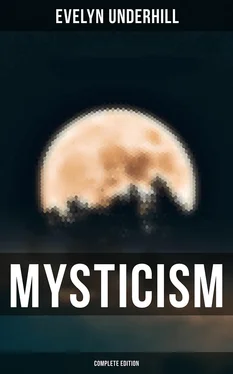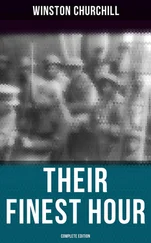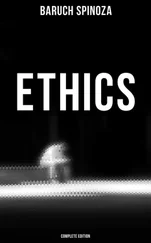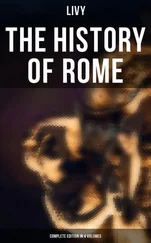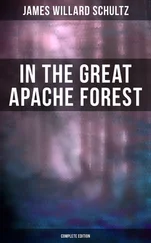“This change, this upsetting, is called re-birth. To be born simply means to enter into a world in which the senses dominate, in which wisdom and love languish in the bonds of individuality. To be re-born means to return to a world where the spirit of wisdom and love governs and animal-man obeys.”253 So Eckartshausen. It means, says Jane Lead, “the bringing forth of a new-created Godlike similitude in the soul.”254 He is brought forth, says Eckartshausen again, in the stable previously inhabited by the ox of passion and the ass of prejudice.255 His mother, says Boehme, is the Virgin Sophia, the Divine Wisdom, or Mirror of the Being of God. With the emergence of this new factor into the conscious field — this spiritual birth — the mystic life begins: as the Christian epoch began with the emergence of Divine Spirit in the flesh. Paradise, says Boehme, is still in the world, but man is not in Paradise unless he be born again. In that case, he stands therein in the New Birth,256 and tastes here and now that Eternal Life for which he has been made.
Here then are some characteristics of the map which the Christian mystics are most inclined to use. There are, of course, other great landmarks upon it: and these we shall meet as we follow in detail the voyages of the questing soul. One warning, however, must be given to amateur geographers before we go on. Like all other maps, this one at its best can but represent by harsh outline and conventional colour the living earth which those travellers trod and the mysterious seas on which they sailed. It is a deliberately schematic representation of Reality, a flat and sometimes arid symbol of great landscapes, rushing rivers, awful peaks: dangerous unless these its limitations be always kept in mind. The boy who defined Canada as “very pink” was not much further off the track than those who would limit the Adorable Trinity to the definitions of the “Athanasian” Creed; however useful that chart may be, and is, within the boundaries imposed by its form.
Further, all such maps, and we who treat of them, can but set down in cold blood and with a dreadful pretence of precision, matters which the true explorers of Eternity were only able to apprehend in the ardours of such a passion, in the transports of such a union as we, poor finite slaves of our frittered emotions, could hardly look upon and live. “If you would truly know how these things come to pass,” says St. Bonaventura, in a passage which all students of theology should ever keep in mind, “ask it of grace, not of doctrine; of desire, not of intellect; of the ardours of prayer, not of the teachings of the schools; of the Bridegroom, not of the Master; of God, not of man; of the darkness, not of the day; not of illumination, but of that Fire which enflames all and wraps us in God with great sweetness and most ardent love. The which Fire most truly is God, and the hearth thereof is in Jerusalem.”257
Конец ознакомительного фрагмента.
Текст предоставлен ООО «ЛитРес».
Прочитайте эту книгу целиком, купив полную легальную версию на ЛитРес.
Безопасно оплатить книгу можно банковской картой Visa, MasterCard, Maestro, со счета мобильного телефона, с платежного терминала, в салоне МТС или Связной, через PayPal, WebMoney, Яндекс.Деньги, QIWI Кошелек, бонусными картами или другим удобным Вам способом.
